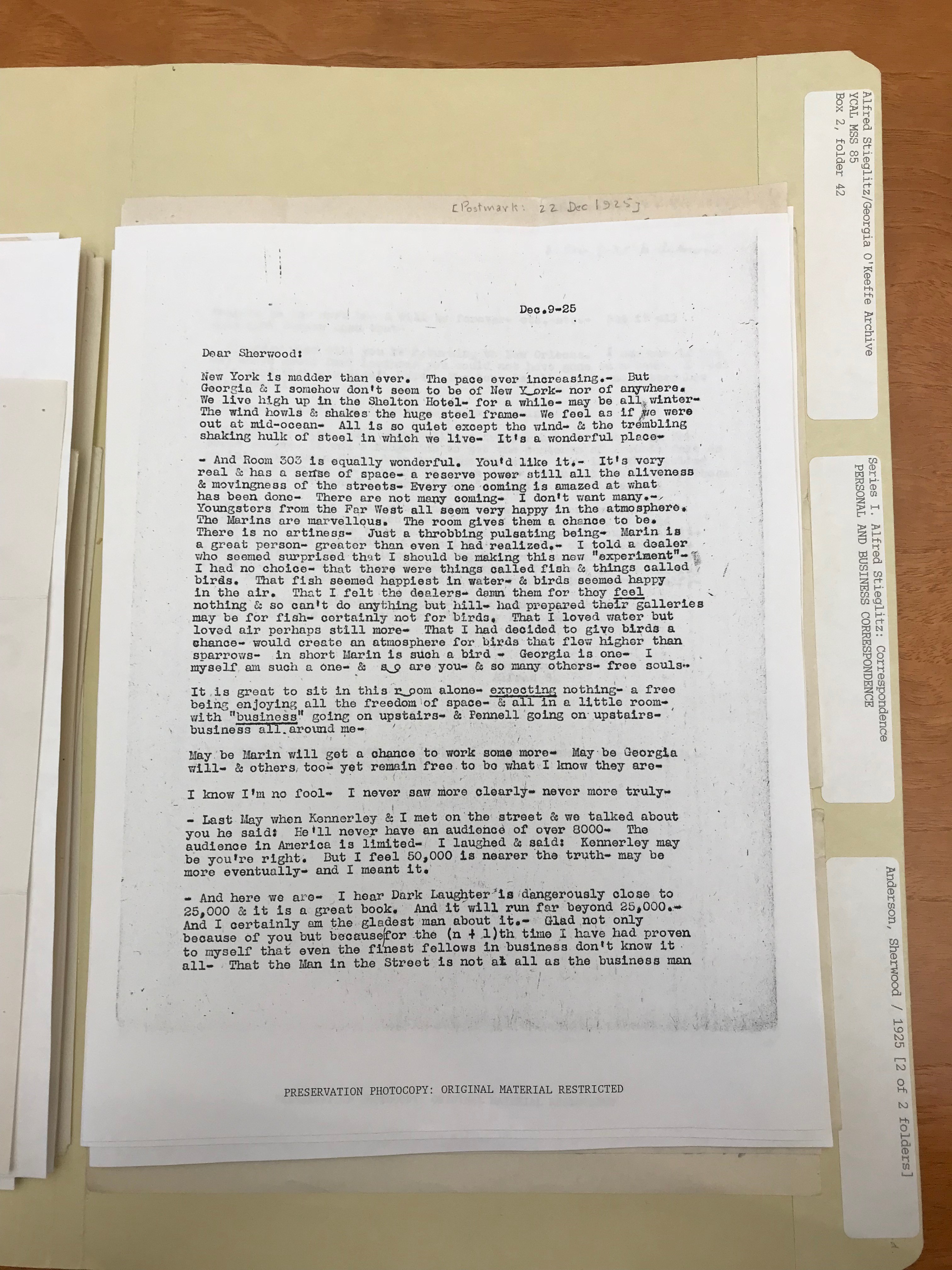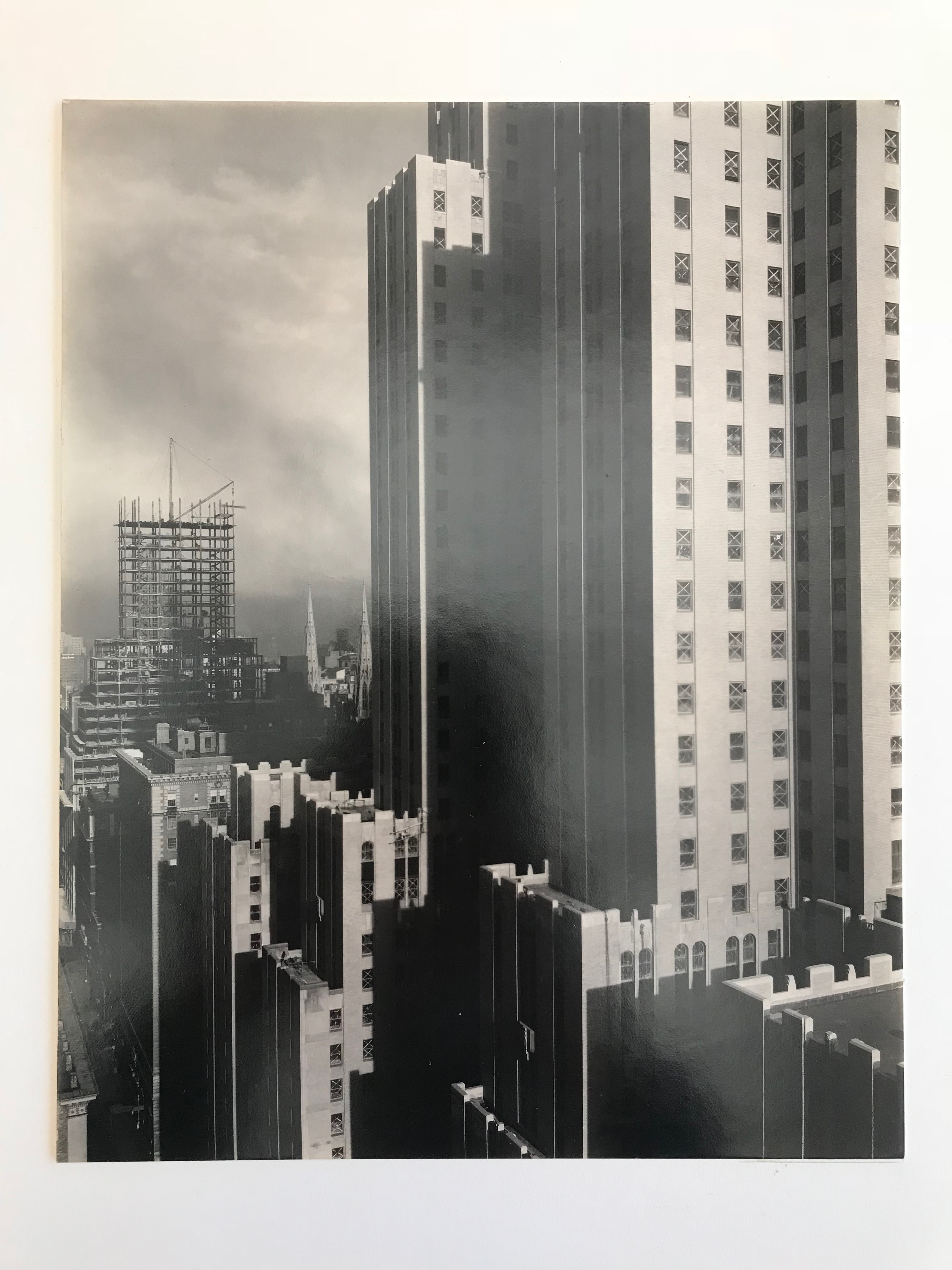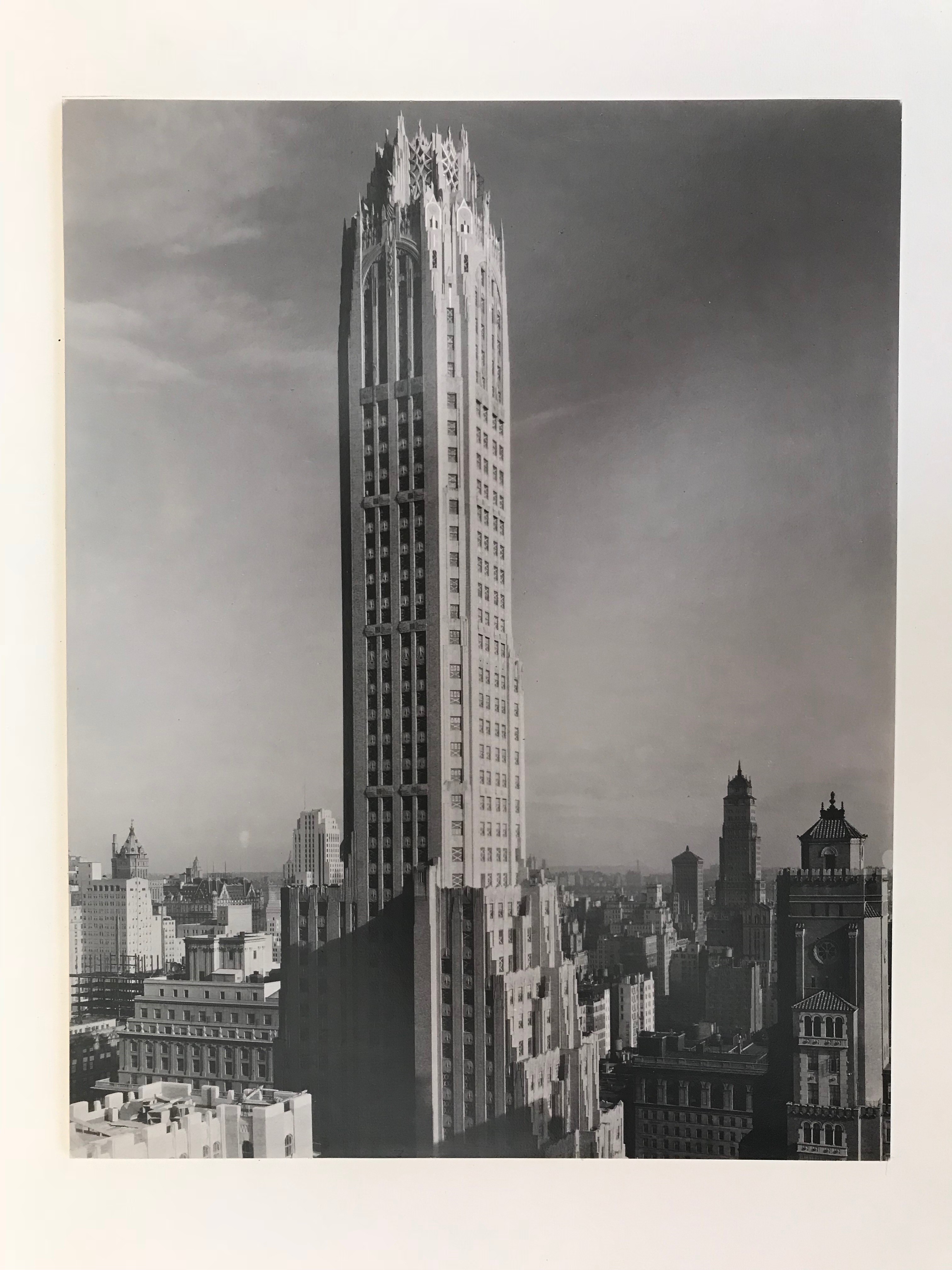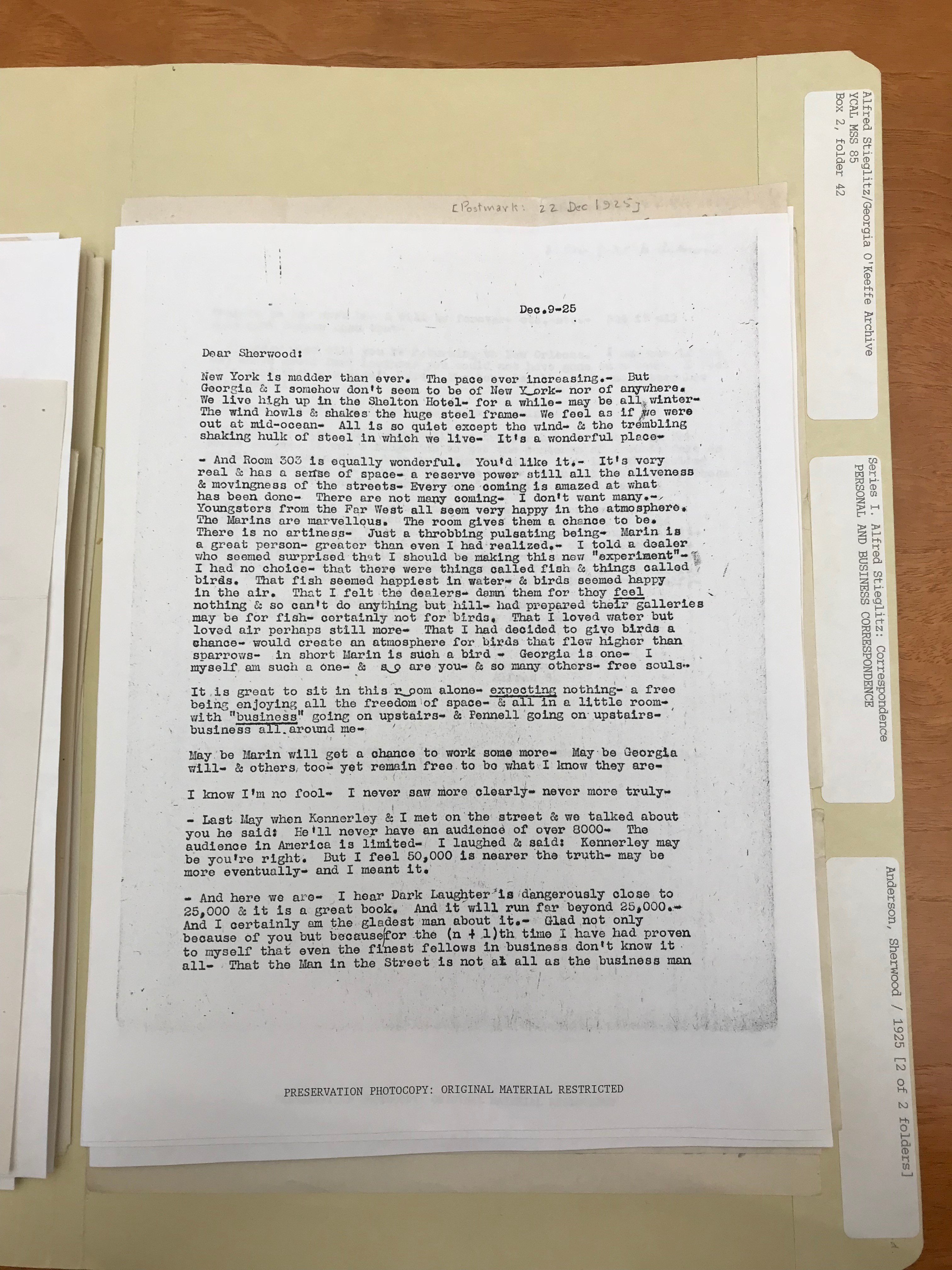From Their Window at the Shelton: O’Keeffe and Stieglitz’s City Views Lee Ann Custer, Visiting Graduate Student Fellow at the Beinecke Library, June 2018
In November 1925, artists Georgia O’Keeffe and Alfred Stieglitz took up residence at the newly completed Shelton Hotel designed by architect Arthur Loomis Harmon, located on Lexington Avenue between 48th and 49th streets in New York City. Over the next decade, O’Keeffe made more than twenty views of New York, inspired by the vista from the upper stories of the hotel.[1] Prompted by her verve to take on skyscrapers as a subject, Stieglitz also made numerous images of their view.[2]
My dissertation explores the architectural developments of the increasingly dense metropolis of late nineteenth- and early twentieth-century New York through its open spaces or “voids,” and argues that these politically charged pockets of “urban air” were embedded in the artistic culture of the time. As part of this study, I am researching O’Keeffe and Stieglitz’s experience living in the Shelton Hotel and—thanks to new zoning laws of the period—the voids preserved above the buildings that surrounded them.
The Beinecke’s vast holdings in the Stieglitz-O’Keeffe Archive reveal that though O’Keeffe and Stieglitz enjoyed their time away from the city in upstate New York at Lake George (and later, for O’Keeffe, in northern New Mexico), they were comfortable in the Shelton Hotel as well—itself a kind of vertical retreat from the bustle, dirt, and grit of the city.
In this letter to his friend, writer Sherwood Anderson, Stieglitz describes the kind of escape the Shelton Hotel was:
“Dear Sherwood:
New York is madder than ever. The pace ever increasing. – But Georgia & I somehow don’t seem to be of New York – nor of anywhere. We live high up in the Shelton Hotel – for a while – may be all winter – The wind howls & shakes the huge steel frame – We feel as if we were out at mid-ocean – All is so quiet except the wind – & the trembling shaking hulk of steel in which we live – It’s a wonderful place – ”. (YCAL MSS 85, Box 2, Folder 42, Dec 9, 1925)


The photographs that Stieglitz made from his windows at the Shelton Hotel visually emphasize this remove from the ground. The artist works from the upper stories of the hotel, and, by keeping the camera parallel to the ground plane, virtually eliminates the streets from his representations of the city.

YCAL MSS 85, Box 125, Folder 2484, New York [from the Shelton] / [1930]

YCAL MSS 85, Box 125, Folder 2483, New York [from the Shelton] / [1930]
Lee Ann Custer is a doctoral candidate in History of Art at the University of Pennsylvania specializing in the art, architecture, and urbanism of the United States. She earned her B.A. in History of Art and Architecture from Harvard University. Her current research focuses on the development and imaging of the modern metropolis, with specific interest in issues of access and identity.
***
The Beinecke Library encourages scholars, students, and the public to engage the past in the present for the future. In the service of new scholarship, the library offers generous fellowships for visiting scholars and for graduate students to support research in a wide range of fields. To learn more about fellowship opportunities, please visit beinecke.library.yale.edu/fellowships
[1] Georgia O’Keeffe, Georgia O’Keeffe (New York: Viking Press, 1976), unpaginated text accompanying entry 17; Anna Chave, “‘Who Will Paint New York?’: ‘The World’s New Art Center’ and the Skyscraper Paintings of Georgia O’Keeffe,” American Art, 5: no. 1/2 (Winter – Spring 1991), 98.
[2] Wanda Corn,The Great American Thing: Modern Art and National Identity, 1915-1935 (Berkeley: University of California Press, 1999), 26–28.
